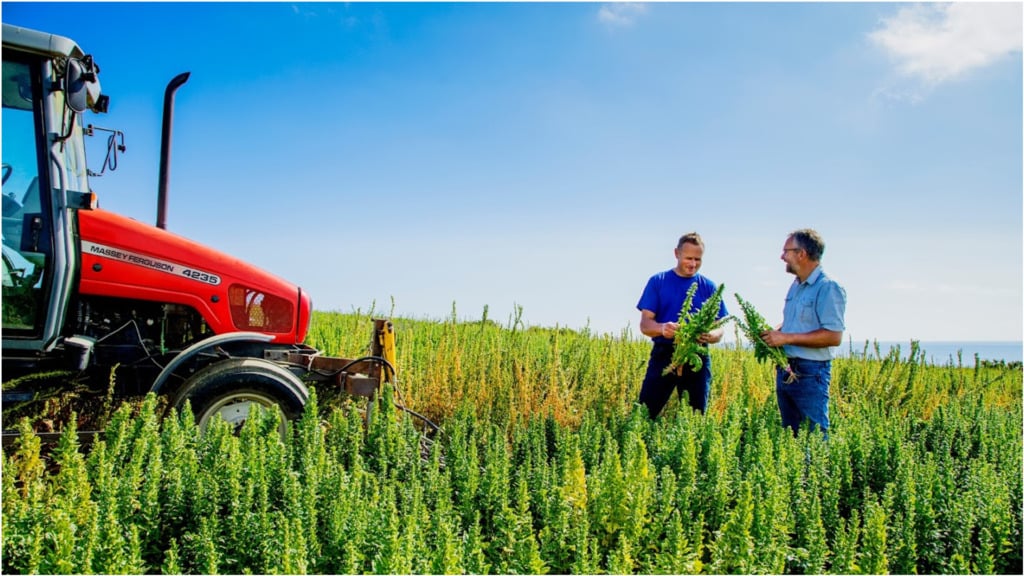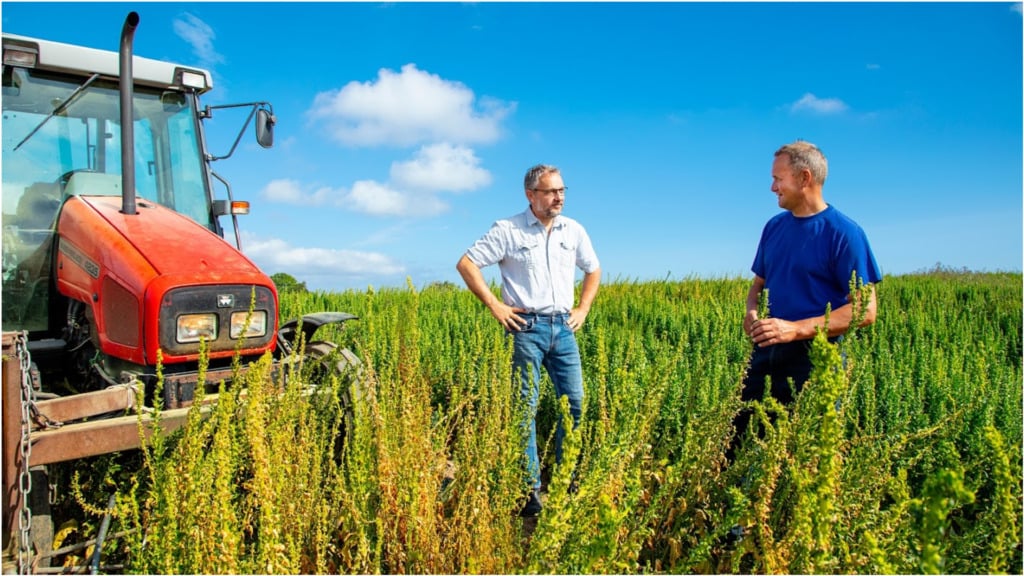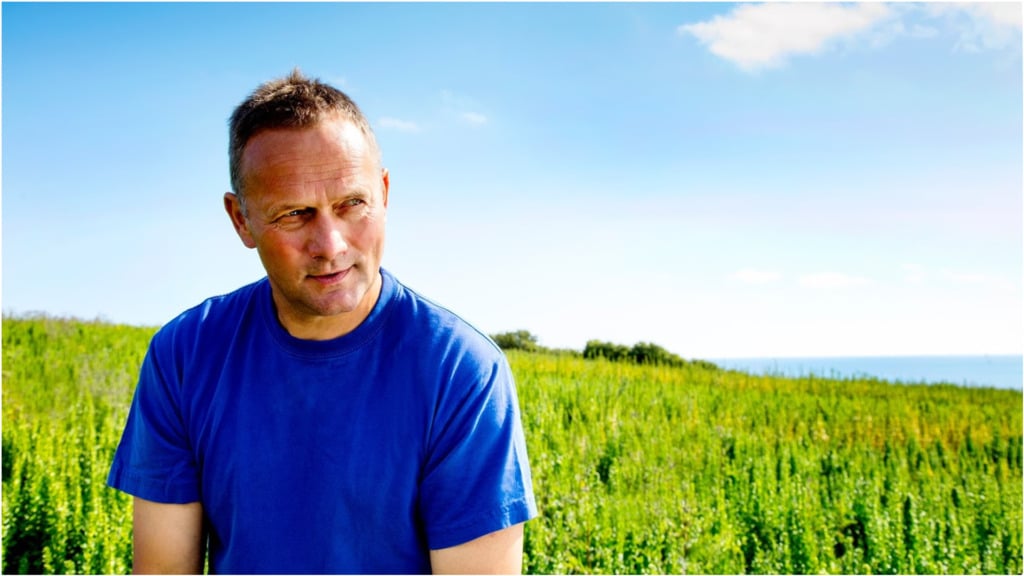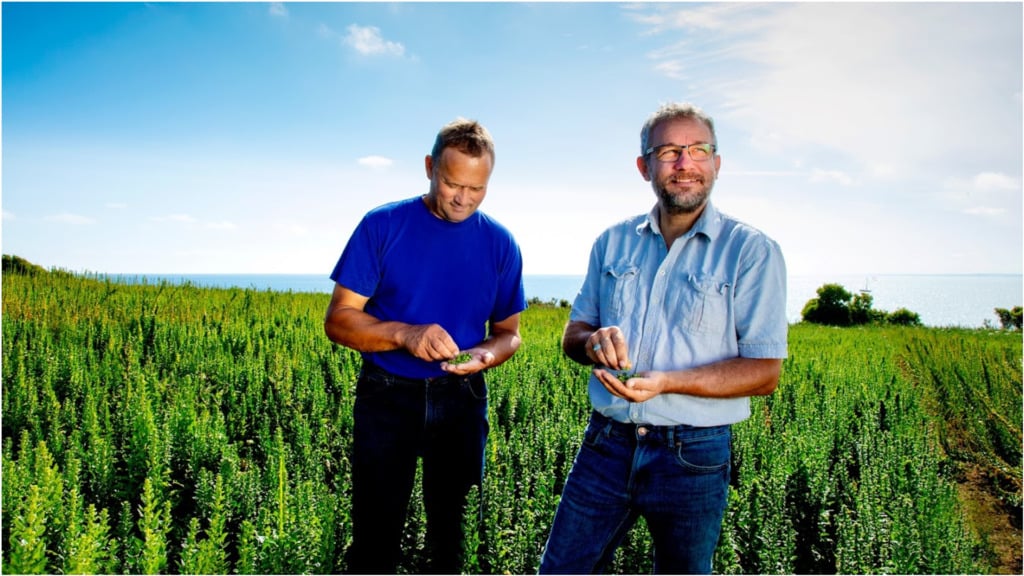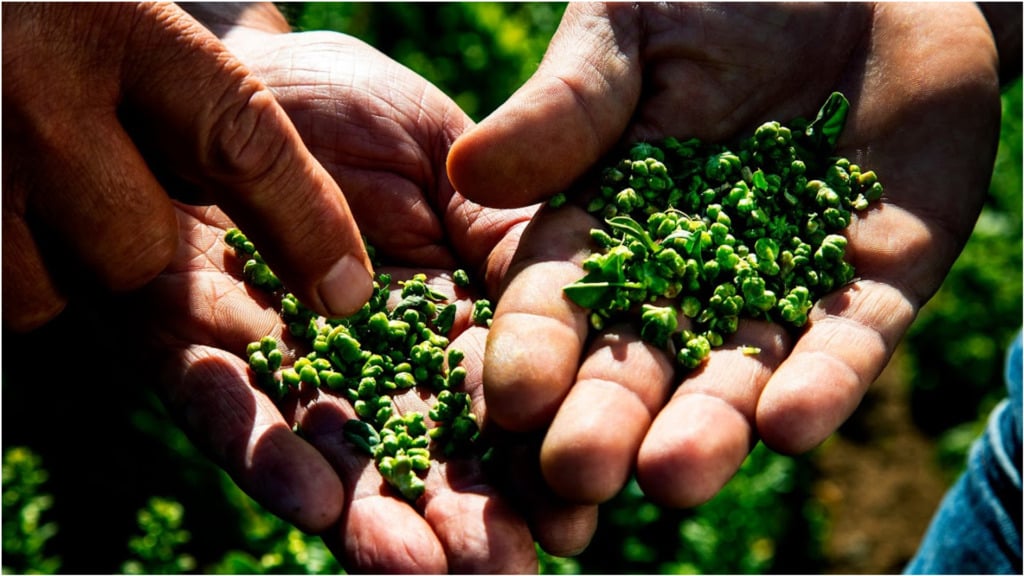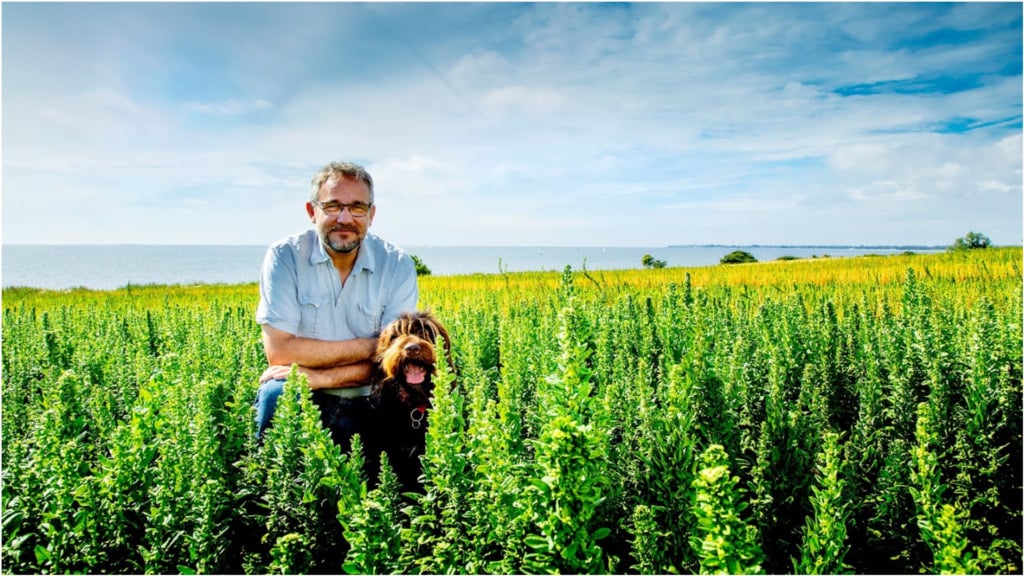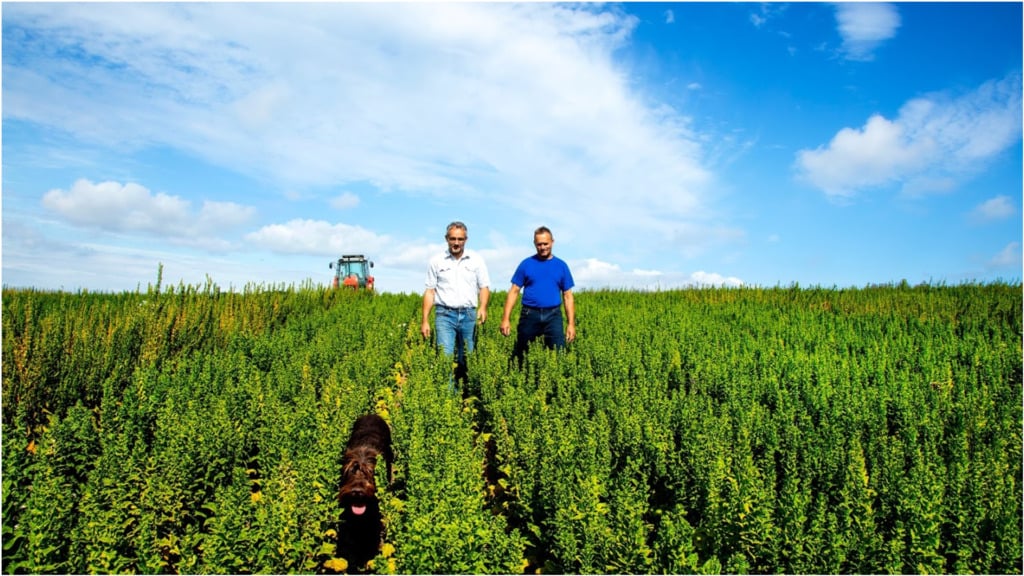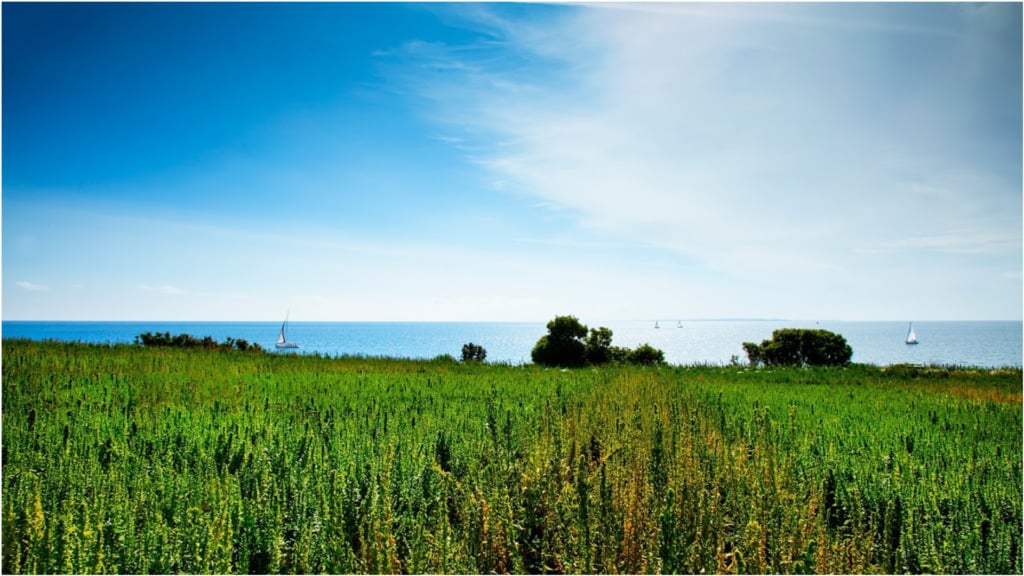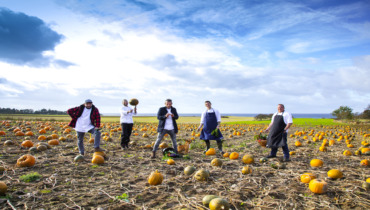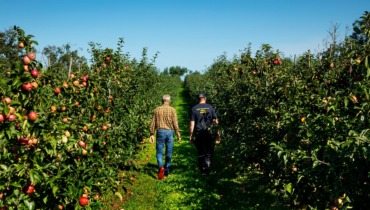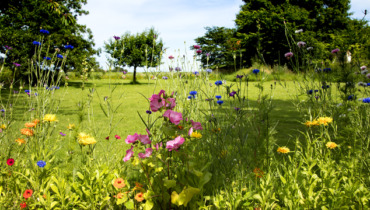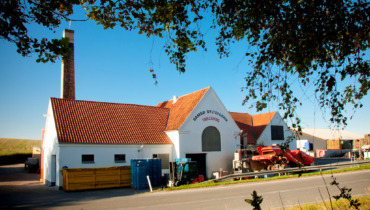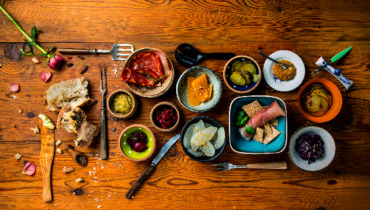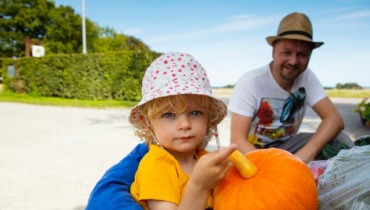Seedsmen of the 1st degree
Most people know exactly what a windswept field of cereal or grain looks like. Many can also point out the green leaves of the potato plant and its white flowers. But what does a spinach seed field look like? And can cress really grow to almost a metre high?
Land of beauty
A diverse patchwork of fields is scattered along the country roads on Samsø. Some are purple, others orange and others again deep green. Many of the fields are quite small and together they make up a picturesque and varied countryside bringing joy to islanders and visitors alike.
On your trip around Samsø you will probably also notice fields that appear as if they ought to have been harvested long ago. The beets have turned brown and gone to seed, the Chinese cabbage no longer resembles Chinese cabbage but rather a yellow flower field and the cress is knee-high.
And there’s a good reason for that. Several of the crops grown on Samsø are not grown for the sake of the crop itself but for the millions of tiny seeds which the plant produces when left to grow large before being harvested.
From Nørreskifte to Mumbai
Denmark has long been one of the world’s leading seed producers and in the news, we hear now and then how Danish grass seeds have found their way to World Cup football stadiums and famous golf courses of Dubai and Portugal. “In many other countries it’s too hot, too cold, too humid or too dry for seed production but in Denmark there is a fairly good balance of sun and rain. It also requires many hours of light a day for a plant to go to seed of which we have plenty in our latitudes. On Samsø conditions are even better than most other places in the country. Our many hours of sunshine, limited amount of rainfall and far fewer days of frost than the national average provide optimal conditions for seed cultivation,” explains Henrik Øster, chairman of the Samsø Agricultural Association.
The fields of Samsø produce seeds of, among other things, Chinese cabbage, salsify, chives, marigold, grass, cress, chrysanthemum, beetroot, Satin flowers and spinach and the seeds are sold worldwide. “The cress seeds sprinkled in the soil by nursery children in Mumbai could very well be from Onsbjerg Vestermark. Similarly a farmer in Thailand can grow Pak Choi with seeds originating from Nørreskifte. That’s pretty awesome!,” exclaims Henrik Øster.
Neighbourhood Watch
A number of conditions must be prevalent to grow strong seeds. “The climate and types of soil of course play a crucial role but it is just as important to maintain control over your own and your neighbours’ field plans. Those who buy the seeds and export to the rest of the world
have some very strict standards for purity and germination percentage – i.e. the percentage of the seeds that are able to germinate.
It’s no good if two fields with two different types of spinach are too close to each other because of the risk of cross-pollination and hybridisation,” explains Jens Jakob Vohnsen.
The farmers on Samsø are happy to help each other. Not only in laying out the most sensible field plans but also in each doing what they are best at. “Henrik here, for example, developed a special device for his tractor to be able to cut away the male plants with great precision,” Jens Jakob Vohnsen explains and allows Henrik Bertelsen to continue: “We sow the spinach in rows of males next to females – far more females than males. When the plants have grown large, the males start pollinating the females and once that is complete, the males’ job is done. We simply cut them down and shred them to prevent them contaminating the harvest.”
A combine harvester is used for the harvesting and the precious load is taken off to storage. “Of course we have separate storage facilities for the different varieties so the seeds are not mixed. If they do, the seed companies will not buy the seeds, which would be a disaster. Therefore, we are very careful about changing footwear and equipment as we switch between varieties. The dog isn’t allowed to tag along either,” explains Jens Jakob Vohnsen, while patting the rough-haired Anna.
In the warehouse the grey spinach seeds are pampered with appropriate amounts of hot and cold air while the seedsman anxiously awaits a response from the seed company. “Immediately after the harvest a portion of the seeds is sent to the seed company which sows a sample in a greenhouse. After a few days the spinach plants have sprouted sufficiently for them to be sent off for gene testing, where they determine if the harvest is pure enough and whether the germination percentage is high enough. The result is really important for the whole year’s outcome so these are some very tense days,” states Henrik Bertelsen.
One million kilometres
140 hectares or the equivalent of 196 times the size of the football field in the national stadium. This is the size of the area given over to spinach seed cultivation on Samsø. In a good year ca. 182,000 kilos of pure spinach seeds are produced – a quantity that is difficult to comprehend. Even more inconceivable is that the many kilos in question equate to nearly 14billion individual seeds.
To put that into perspective, imagine that we sow all 14 billion seeds in a long row every 7.5cm. The row would be 1,050,000 kilometres in length – or the same as 26 times around the Earth!
The vast majority of the spinach seeds are grown for the so-called ‘baby leaves’ – the small delicate leaves we know from our own kitchen, bought pre-washed in a plastic bag and ready for the salad.
But before the leaves end up on your dinner plate they have, as you can read, been on a long journey!
Last updated: 09/02/2021 14:19

